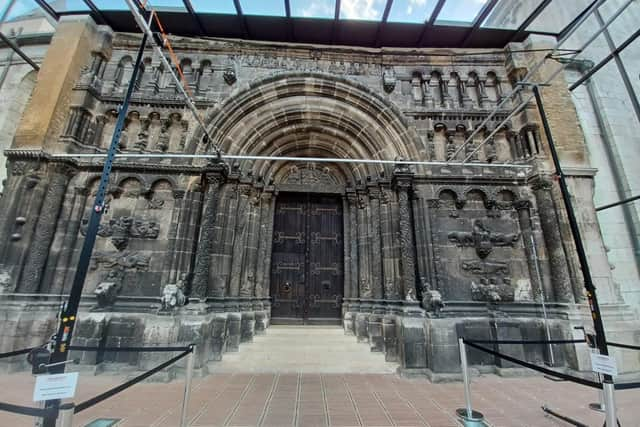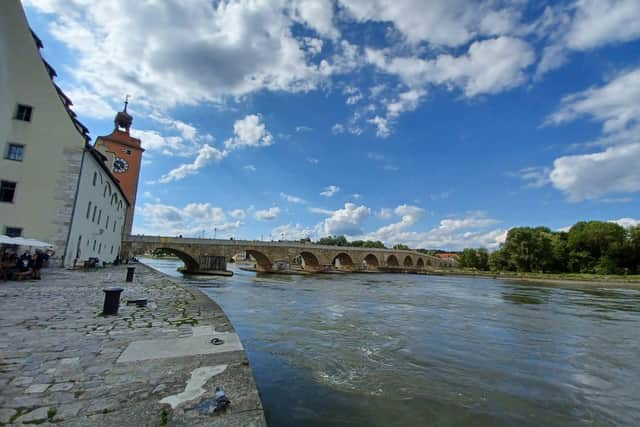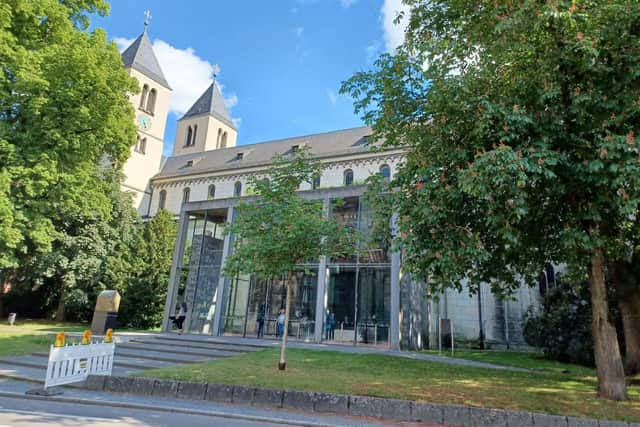Donegal missionary Muiredhach Mac Robartaigh’s (Marianus Scottus) role in pioneering German scholasticism
and live on Freeview channel 276
It is not known exactly when Muiredhach Mac Robartaigh [anglicised McGroarty or Rodgers] was born. But experts agree he flourished from 1067 to 1080 in Regensburg where he was known by his latin alias Marianus Scottus.
Muiredhach was famous for the foundation of the first ever Schottenklöster [Irish monastery] in the town on the banks of the Danube.
Advertisement
Hide AdAdvertisement
Hide AdDavid Sifter, in a paper published by Maynooth University in 2018, writes: “Hailing from the area of modern Donegal [he] was the founder of the Benedictine Schottenklöster in Regensburg/Ratisbon (Bavaria, Germany). He is even credited with the initiation of the South-German tradition of Schottenklöster as a whole.”


Mac Robartaigh followed in the footsteps of earlier Irish missionaries such as Colmcille, Gall, Columbanus, Fiacre, Cataldus and Cillian, and left Ireland in 1067. He ended up in Franconia and took the rule of Benedict in Bamberg.
According to a paper delivered to the Royal Irish Academy in 1862 by the Bishop of Down and Connor William Reeves, an account of the life of the Donegal-man, ‘composed by an Irish monk of Ratisbon, and carefully edited by John Bollandus’ the Flemish hagiographer, had survived.
“Arriving, on their way, at Bamberg, they were kindly received, and, after a year’s sojourn, were admitted to the order of St. Benedict in the monastery of Michelsberg,” quotes Reeves.


Advertisement
Hide AdAdvertisement
Hide AdWithout German, the language of the country, ‘they preferred retirement, and a small cell at the foot of the hill was assigned them for their use,” the story went. From Bamberg Muiredhach travelled south to Regensburg.
The Dictionary of Irish Biography tells us that his companion John became a recluse at Göttweich abbey in Austria, while the ‘abbess of Obermünster gave Marianus the priory of Weih-Sankt-Peter [sic] near Regensburg, which he restored c.1076’.
White Hugh MacNéill and his wars with the Lough Foyle vikingsReeves, quoting again from Bolland, relates how the Abbess granted him this Church of St. Peter, commonly known as ‘Weich-Sanct-Peter’ [sic] with an adjacent plot, where, in 1076, a citizen called Bethselinus (Bezelin) built for the Irish, at his own cost, a little monastery, which the Emperor Henry IV soon after took under his protection, at the solicitation of the Abbess Hazecha.”
Thus Mac Robartaigh became a lynchpin of scholasticism and learning in Germany a thousand years ago.


Advertisement
Hide AdAdvertisement
Hide AdBolland again states: “The fame of Marianus, and the news of his prosperity, presently reached Ireland, and numbers of his kindred were induced to come out, and enter his society. The early connexions of the monastery were chiefly with Ulster, his own native province, and the six Abbots who succeeded him were all from the north. The seventh was a southern. From Weich-Sanct-Peter [sic] another Irish monastery, called St. James’ of Ratisbon, took its rise in 1090.”
The ‘Klösterkirche St. Jakob’ was completed in 1200 partly by Irish masons. The building is still standing and is considered one of the most important Romanesque buildings in Germany. During a recent visit a Journal reporter marvelled at its northern portal with stone carvings and motifs redolent of Ireland. Inside the church is decorated with what appear to be Celtic crosses. It is not the only monument Mac Robartaigh left us. His writings and calligraphy survive in the ‘Codex 1247’ in the Imperial Library of Vienna. His glosses in Irish are among the oldest surviving examples of the oldest vernacular literature, Irish, in Europe.
He is believed to have died on February 9, 1088, which is one of a number of feast days celebrated in his honour.
Others include April 17 and yesterday, July 4.
